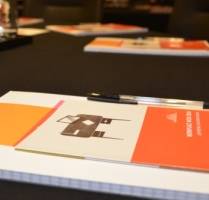November 20, 2014
Gender pay gap at lowest point in history, reports ONS
 The gender pay gap is now at its lowest point in history, with more women in work than ever before. According to new statistics by the Office for National Statistics (ONS) the pay gap has reduced by 0.7 percentage points over the past year to 19.1 per cent, and for those in full-time work the gender pay gap has reduced to almost zero for those under 40. Action is being taken to tackle one of the reasons for the pay gap – career breaks, often to raise a family by extending flexible working to all employees, and from next year, tax-free childcare and shared parental leave will come into effect. However, one of the main causes of the gender pay gap is that men tend to work in better paid sectors to women so a range of measures are being introduced to help women move from low-paid, low-skilled work into higher paid, higher skilled work. This includes a new £2 million training and mentoring programme of events for women, including those working part-time and older workers, to be carried out by the UK Commission for Employment and Skills. This will target women working in the science, technology, engineering and maths (STEM), retail and hospitality management and agricultural sectors.
The gender pay gap is now at its lowest point in history, with more women in work than ever before. According to new statistics by the Office for National Statistics (ONS) the pay gap has reduced by 0.7 percentage points over the past year to 19.1 per cent, and for those in full-time work the gender pay gap has reduced to almost zero for those under 40. Action is being taken to tackle one of the reasons for the pay gap – career breaks, often to raise a family by extending flexible working to all employees, and from next year, tax-free childcare and shared parental leave will come into effect. However, one of the main causes of the gender pay gap is that men tend to work in better paid sectors to women so a range of measures are being introduced to help women move from low-paid, low-skilled work into higher paid, higher skilled work. This includes a new £2 million training and mentoring programme of events for women, including those working part-time and older workers, to be carried out by the UK Commission for Employment and Skills. This will target women working in the science, technology, engineering and maths (STEM), retail and hospitality management and agricultural sectors.

























November 7, 2014
Orgatec 2014 focuses on collaboration, quiet and wellbeing in the workplace
by Anna King • Comment, Events, Furniture, Workplace design
Anna King reports from the biennial office furniture and interiors fair Orgatec, which took place recently in Cologne: Collaboration seemed to be king once again at this year’s Orgatec trade fair in Cologne, so much so that you’d be hard pressed to find a conventional workstation amongst the thousands of products on display. Even ergonomic task chairs in the traditional sense were thin on the ground. Senator’s offering was typical in its focus on collaborative work and the provision of work settings. As well as the Ad-Lib Scholar range for educational establishments, it presented the Ad-Lib Work Lounge multipurpose chair, both the work of British design studio PearsonLloyd. This upholstered model complete with headrest is available on glides or castors so it can slot into a multitude of workplace scenarios. Shown in some rich shades such as moss green and turquoise, it comes complete with a fold-down worksurface for brainstorming or other group working.
More →